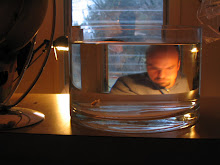So was the great horse meant to be seen, or not? Yesterday morning, in a clammy drizzle, the three of us drove up the road to Old Hilltop, to the Pimlico Race Course, where the club was offering views of the thoroughbreds as they trained for the upcoming Preakness Stakes, and tours of the stables beyond. About a hundred people had gathered, and clustered near the rail, gripping cups of coffee and chatting about the occasional passing horse. But where, some wondered, was California Chrome, the unlikely Derby winner and current favorite? We looked up and down the vast track, and signed up for a tour, and we wondered.
So was the great horse meant to be seen, or not? Even Berlioz doesn't seem to have been sure. As Ian Kemp has observed, in an essay on the finale of Act I of Berlioz's Les Troyens, the composer initially seems to have wanted to feature an actual prop of the Trojan Horse. "The gigantic horse appears," the stage directions in the autograph libretto read, "and crosses the back of the stage." In a later copyist libretto, however, he struck these directions, and wrote that the procession "should be invisible to the spectator." The horse was now to be a notion, rather than a fact.
But wait. Despite Berlioz's reservations, his music features a marked crescendo (against which his Cassandra sings, La voici!) that seems to insist that, as Kemp puts it, "the horse should be seen." Yes: that's more or less how we felt, too, as we stood under the gray, insular skies and nursed our warm drinks. And suddenly we were rewarded, as one of the stable guards smiled and proudly announced that California Chrome was about to emerge. Seconds later, he did:
And now we were all Trojans, doubts cast aside, ready to take the horse in, in all of its splendor.






No comments:
Post a Comment